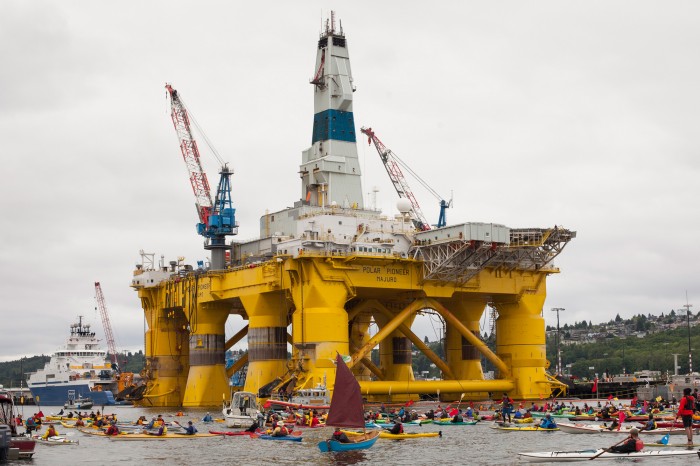Obama’s Drilling Ban Is Just One of Many Forces Pushing the U.S. Toward Renewables
Barack Obama has banned new oil and gas drilling in huge stretches of U.S.-owned waters across the Arctic and Atlantic oceans.
In a statement, the White House deemed “the vast majority of U.S. waters in the Chukchi and Beaufort Seas as indefinitely off limits to offshore oil and gas leasing.” In total, that’s over 100 million acres of sea floor that can no longer be tapped for fossil fuels. Canadian Prime Minister Justin Trudeau announced similar plans, designating all waters in the Canadian Arctic as off limits.
The move is designed to maintain waters for local communities, wildlife, and scientific research, by protecting from the risk of an oil spill. But the timing is clearly an attempt by Obama to protect the areas from being green-lit for drilling by the forthcoming administration.
Indeed, the move won’t be welcomed by Donald Trump, who has made no secret of the fact that he wants to increase U.S. oil production. But the president-elect may find Obama’s play hard to counter. Obama made use of a 1953 statute, which allows a president to block the sale of new offshore drilling and mining rights, to enact the ban—and the aged law doesn’t include provision for reversal. Trump will probably have to take the matter to court if he wants to overturn it.

Rather than do that, though, now may be a good moment for Trump to recognize the findings of a new report that shows strong support on both sides of the U.S. political spectrum for cutting carbon emissions. The research, carried out by Yale and George Mason Universities, showed that 70 percent of registered U.S. voters favor limits on carbon dioxide. A majority also backs the idea of exploring the development of renewable energy on public land.
That’s not the only reason to favor a shift away from fossil fuels. A recent study by researchers at the University of Texas at Austin showed that wind and solar are the cheapest way to build a new power plant in 51 percent of America’s 3,110 counties. Natural gas combined cycle plants wins out as the cheapest option in 42 percent of counties.
To be sure, gas clearly still has its place right now. But the trend is clear: markets are already driving a shift away from fossil fuels, and renewables are expected to fall further in price. Sadly, it seems unlikely that Trump will pay much attention to these signs when he begins implementing his vision for U.S. energy policy next month.
(Read more: Science, “Renewables Are Booming—but Buyer Beware,” “Donald Trump’s 'America-First Energy Plan' Shows He Knows Virtually Nothing About the Issue”)
Keep Reading
Most Popular
Large language models can do jaw-dropping things. But nobody knows exactly why.
And that's a problem. Figuring it out is one of the biggest scientific puzzles of our time and a crucial step towards controlling more powerful future models.
The problem with plug-in hybrids? Their drivers.
Plug-in hybrids are often sold as a transition to EVs, but new data from Europe shows we’re still underestimating the emissions they produce.
Google DeepMind’s new generative model makes Super Mario–like games from scratch
Genie learns how to control games by watching hours and hours of video. It could help train next-gen robots too.
How scientists traced a mysterious covid case back to six toilets
When wastewater surveillance turns into a hunt for a single infected individual, the ethics get tricky.
Stay connected
Get the latest updates from
MIT Technology Review
Discover special offers, top stories, upcoming events, and more.